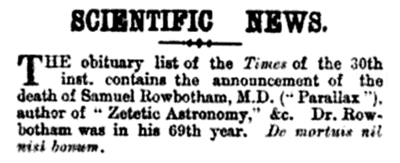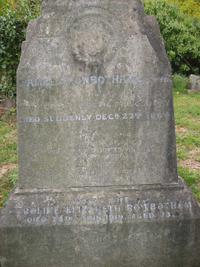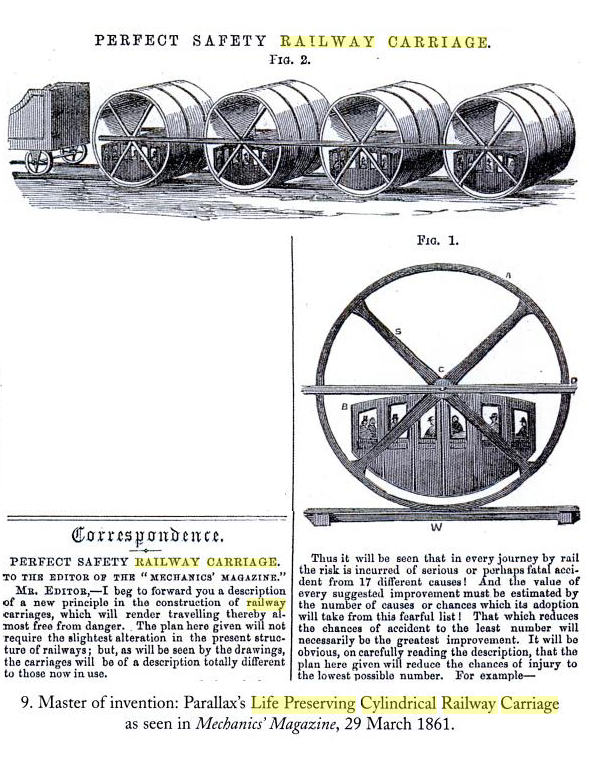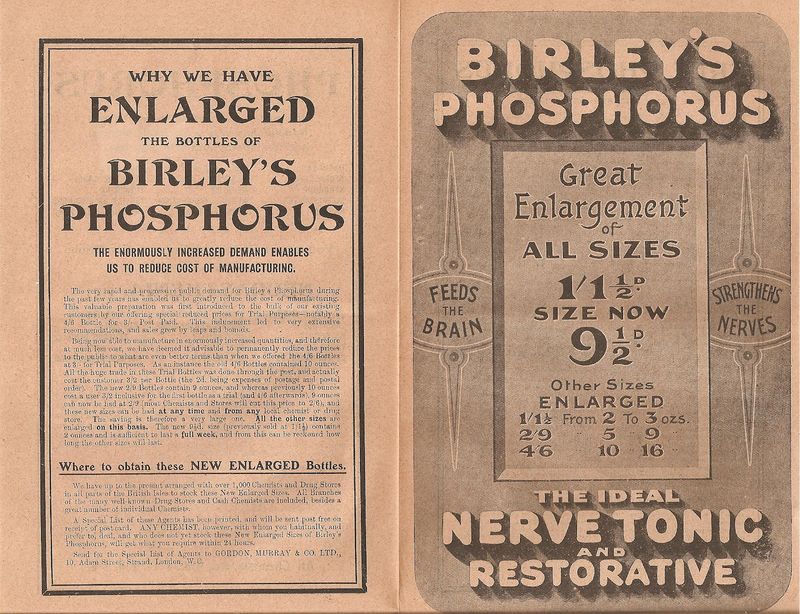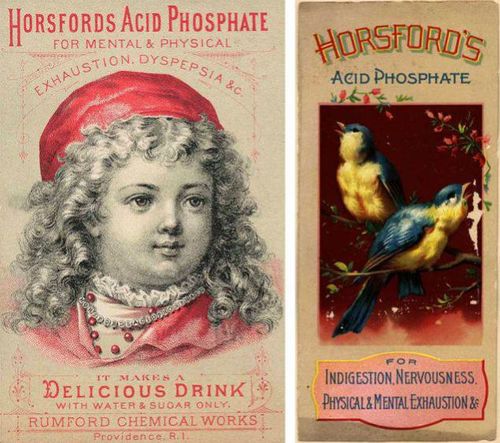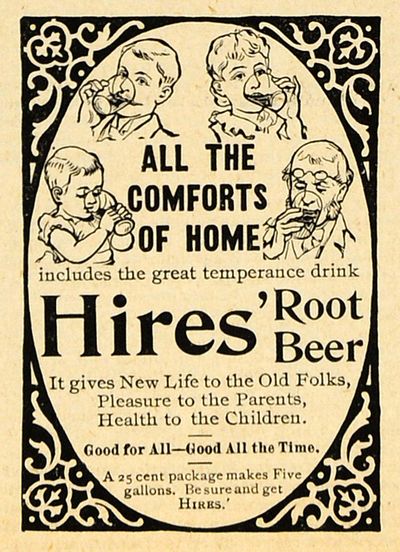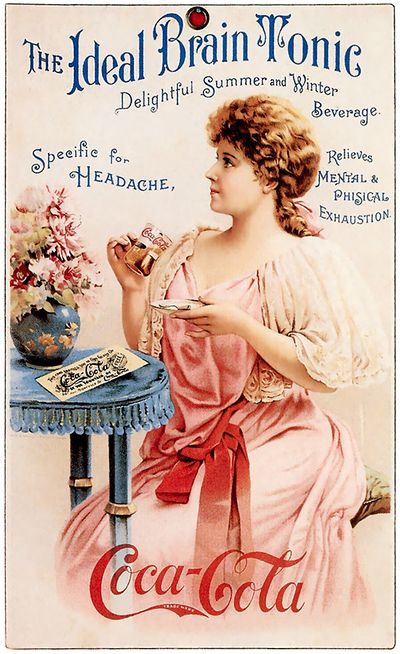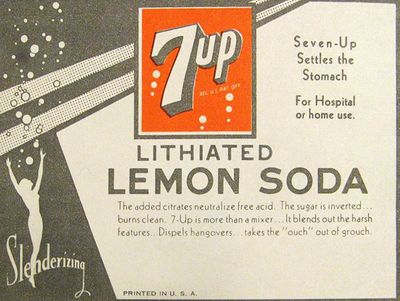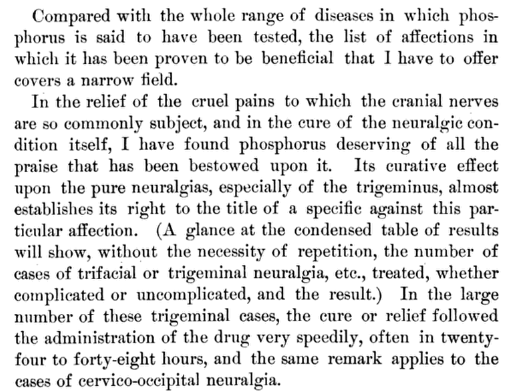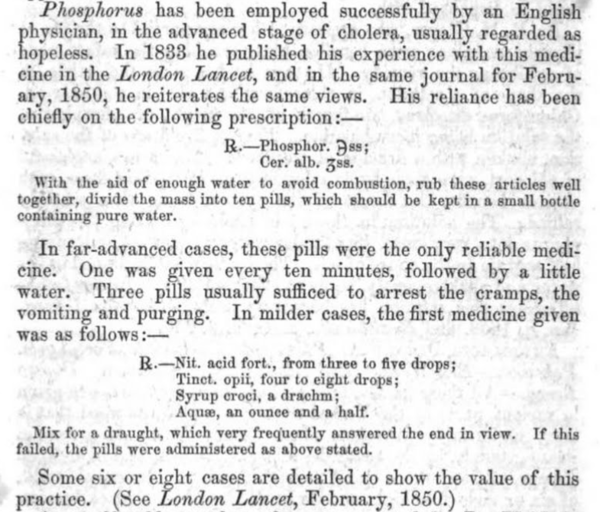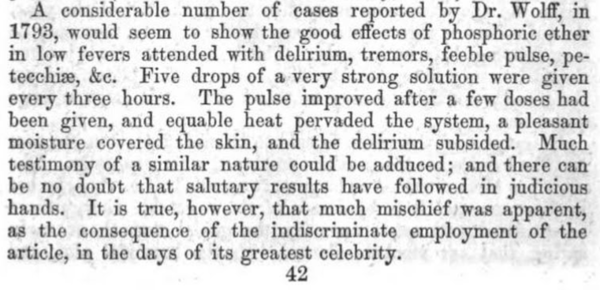Difference between revisions of "Samuel Rowbotham"
Tom Bishop (talk | contribs) |
Tom Bishop (talk | contribs) |
||
| Line 149: | Line 149: | ||
=Religion= | =Religion= | ||
| − | On the topic of religion Rowbotham describes that it is a fallacy to push religion based on belief alone, and holds that those who believe the teachings of the Scripture should seek to ''demonstrate'' their beliefs. As an example, the Scriptures | + | On the topic of religion Rowbotham describes that it is a fallacy to push religion based on belief alone, and holds that those who believe the teachings of the Scripture should seek to ''demonstrate'' their beliefs. As an example, the Scriptures describe a world that is flat with a moving sun, which exists over a void, with small stars, etc. If it is discovered that this cosmology is true, then it is only logical that this is physical evidence which stands in favor of Scripture. |
In his [http://www.sacred-texts.com/earth/za/za66.htm closing chapter] of ''Earth Not a Globe'' he writes: | In his [http://www.sacred-texts.com/earth/za/za66.htm closing chapter] of ''Earth Not a Globe'' he writes: | ||
Revision as of 15:04, 15 July 2019
Samuel Birley Rowbotham (AKA Parallax) (1816 – 1884), was an English medical doctor and inventor who wrote Zetetic Astronomy: Earth Not a Globe, based on his decade-long scientific studies of the earth, published a 16-page pamphlet (1849), which he later expanded into a 430 page book (1881) expounding his views. According to Rowbotham's scientific method, which he called Zetetic Astronomy, the earth is a flat disk centered at the North Pole and bounded along its southern edge by a wall of ice, with the sun, moon, planets, and stars only a few thousand miles above the surface of the earth.
Rowbotham and his followers gained notoriety by engaging in raucous public debates with leading scientists of the day. One such clash, involving the prominent naturalist Alfred Russel Wallace, led to several lawsuits for fraud and libel.
After Rowbotham's death, his thousands of followers established the Universal Zetetic Society, published a magazine entitled The Earth Not a Globe Review and remained active well into the early part of the 20th century.
Obituary
The American Association for the Advancement of Science lists him as Dr. Samuel Rowbotham in his 1885 obituary, as does the obituary in Engligh Mechanic and World of Science. The Bookseller obituary confirms he was a practicing doctor of medicine as a "legitimate profession with great success" (Archive).
“ For some years past Dr. Rowbotham, in the name of Dr. Birley, exercised his legitimate profession with immense success. He had a special medicine of his own manufacture, " Free Phosphorous," which was reputed to be efficacious in the cure of a variety of ailments. For some years past Dr. Rowbotham could never under any consideration be induced to travel by rail, Patients or friends at a distance wishing to see him had to send their carriages for him, and within the last few months he visited Brighton for the benefit of his health, journeying to and fro in a private carriage. Curiously enough the mode of conveyance in which he placed his faith, accelerated his death. On an occasion, several months past, when alighting from a cab he slipped and injured his leg, and from that time his health gradually failed. ”
From English Mechanic and the World of Science (Jan 2, 1885) (Archive):
Tombstone
Forum member Thork was able to find Dr. Rowbotham's tombstone at findagrave.com:
“ His tombstone reads "Samuel Rowbotham, M.D., Ph.D., Founder of Zetetic Philosophy, died suddenly Dec. 23rd. 1884." (An eight-line poem follows : most of it has faded, but the last line is "Upon the scroll of fame.") And his wife, Caroline Elizabeth Rowbotham, died 28th. June 1919, aged 73.' (There is another poem under her name, but not one word of it is readable.) ”
Inventions
Fire Resistant Starch
A patent acceptance shows that Dr. Samuel Birley Rowbotham was granted a patent for inflammable starch for use in fabrics and other substances:
“ Specification of the Patent granted to Samuel Rowbotham, of Putney, in the County of Surry, Doctor of Medicine, and Thomas Gratton, of Derby, in the County of Derby, for A Composition for Rendering Uinflammable Linen, Cotton, Silk, or other Inflammable Fabrics and Substances.—Dated January 2, 1860 ”
Life Preserving Railway Carriage
Rowbotham is also inventor of the Life Preserving Cylindrical Railway Carriage.
Medical Career
Like other doctors and medical researchers at the time[1], Rowbotham studied and promoted phosphorous due to its apparent medical benefits.
Asthma
Rowbotham's work is cited in several medical texts:
From Consumption and Tuberculosis (Archive) by John Francis Churchill, M.D., we see:
The above suggests that other medical professionals considered Rowbotham's work to be a 'medicinal fact upon record'.
In Materia Medica and Therapeutics (Archive) by Thomas D. Mitchell, M.D., we find:
Phosphorous Studies
It is thought that Dr. Samuel Birley Rowbotham led the phosphorous revolution in the 1800's. Beginning in the early 1840's, Rowbotham published numerous articles and books on the subject.
Here are a few references:
- "In the year 1842, Dr. Birley drew public attention to the value of Phosphorus as an article of Diet and Medicine" (Archive)
- Rowbotham gives describes the discovery, benefits and workings of Phosphorous here in The Harmsworth (Archive)
- Book: Phosphorus, as discovered and prepared by Dr. Birley
- Reference to the "Birley Treatment" (Archive)
- T.P.'s Weekly "The Wonders of Phosphorous" (Archive)
Phosphorous Medical Drinks
Dr. Samuel Birley Rowbotham was a pioneer of the phosphate medical drink industry of the 1800's, which offered phosphorous and phosphate-based medical drinks which were reputed to be beneficial for a number of health ailments. He marketed a drink called "Birley's Phosphorous":
Phosphorous Revolution
After Rowotham's championing of the medicinal benefits of phosphorus and the sale of his phosphorous medical beverage through the mid 1800's, the Phosphate soda industry is launched in the late 1870's:
http://www.ehow.com/about_5410083_phosphorus.html
“ Phosphate soda
A variant of soda in the United States called "phosphate soda" appeared in the late 1870s. It became one of the most popular soda fountain drinks from 1900 through the 1930s, with the lime or orange phosphate being the most basic. The drink consists of 1 US fl oz (30 ml) fruit syrup, 1/2 teaspoon of phosphoric acid, and enough carbonated water and ice to fill a glass. This drink was commonly served in pharmacies. ”
https://delishably.com/beverages/SodaPops-of-the-1800s-1900s-20s-30s-40s-50s-and-60s (Archive)
“ The Early Days of Soda Pop and Soft Drinks
The earliest types of carbonated soft drinks were waters found in natural mineral springs. In the 13th century, fruits, herbs, flowers and vegetation (such as dandelions) were used to ferment and flavor carbonated waters. Non-carbonated soft drinks made up of water, honey, and lemon juice appeared in the late 1600s. In 1767, Englishman Joseph Priestley mixed water and carbon dioxide, the result was soda (carbonated) water. Juices, wines, and spices were added to the soda water; the products were sold in English pharmacies.
Phosphate soda was introduced in the United States in the late 19th century. Soda fountain drinks with fruit juice, phosphoric acid, and carbonated water became very popular and by the early 1920s, most drugstores featured soda fountains. ”
Competitors
Dr. Rowbotham had a number of competitors in the phosphate medical drink industry, including Dr. Pepper and Coca-Cola. These carbonated drinks were commonly thought to be healthy by the medical profession at the time. Coca-Cola was sold as a patent medicine. Both it and Dr.Pepper were started by pharmacists. Indeed, Dr. Rowbotham preceded them in history.
Phosphorous Medical Research
Today, according to modern sources, Phosphorous is agreed to be one of the most important elements in the human body:
http://www.answers.com/topic/soft-drink
“ Phosphorus in the human body
Despite the fact that it is a highly poisonous substance, phosphorus is one of the most important elements for human beings. It is said to be the second most abundant substance in the body. It is found in the bones, blood and bodily fluids. It is also found in various body organs such as the heart, the brain and the kidneys, where it plays a very important role in organ function. The main function of phosphorus is the production of bones and teeth. This makes phosphorus an essential nutrient for life to be normal.
How phosphorus works in the body
Almost all physiological chemical processes and reactions in the body are regulated by the presence of phosphorus. For phosphorus to function properly in the body, there should be Vitamin D and calcium available. It is essential in the strengthening and protection of cell membranes; it assists the other nutrients, chemicals and hormones to function properly. It is essential for good nerve impulses, normal functioning of the kidneys and the way fats, proteins and carbohydrates are synthesized for growth. It is also a part of DNA and RNA. ”
Phosphorous has a rich history. Throughout the 1800's higher doses of phosphorous was closely studied by the medical community for its medicinal benefits. Phosphorous was said to be beneficial and curative for a number of ailments.
Neuralgia
From a medical text: Phosphorous in the Treatment of Nerualgia (1875) (Archive) in Transactions of the American Neurological Association, Volume 1, we find that Phosphorous was highly beneficial for treating Neuralgia:
Cholera
Phosphorous has also been used to treat Cholera, producing success in even "advanced stages of Cholara, usually seen as hopeless". From Materia Medica and Therapeutics (1857) on p.649 we see (Archive):
Fevers, Delerium, Tremors
In Materia Medica and Therapeutics (Archive) Dr. Mitchell relays the following accounts:
Overdose Risk
Phosphorous research by the medical community was possibly discontinued because of its poisonous effects when abused:
From the Materia Medica and Therapeutics section titled Phospherous A Poison (Archive) we see:
Further Reading
- Phosphorus: Its Claims as a Therapeutic Agent by Wm. Mason Turner, B. Ph: M.D.
Religion
On the topic of religion Rowbotham describes that it is a fallacy to push religion based on belief alone, and holds that those who believe the teachings of the Scripture should seek to demonstrate their beliefs. As an example, the Scriptures describe a world that is flat with a moving sun, which exists over a void, with small stars, etc. If it is discovered that this cosmology is true, then it is only logical that this is physical evidence which stands in favor of Scripture.
In his closing chapter of Earth Not a Globe he writes:
“ It is quite as faulty and unjust for the religious devotee to urge the teaching of Scripture against the theories of the philosopher simply because he believes them to be true, as it is for the philosopher to defend his theories against Scripture for no other reason than that he disbelieves them. The whole matter must be taken out of the region of belief and disbelief. In regard to elements and phenomena belief and disbelief should never be named. Men differ in their powers of conception and concatenation; and, therefore, what may readily be believed by some, others may find impossible to believe. Belief is a state of mind which should be exerted only in relation to matters confessedly beyond the direct reach of our senses, and in regard to which it is meritorious to believe. But in reference to matter, and material combinations and phenomena, we should be content with nothing less than conviction, the result of special practical experimental investigation. ”
Rowbotham continues:
“ The Christian will be greatly strengthened, and his mind more completely satisfied, by having it in his power to demonstrate that the Scriptures are philosophically true, than he could possibly be by the simple belief in their truthfulness unsupported by practical evidence. On the other hand, the atheist or the disbeliever in the Scriptures, who is met by the Christian on purely scientific grounds, will be led to listen with more respect, and to pay more regard to the reasons advanced than he would concede to the purely religious belief or to any argument founded upon faith alone. ”
Rowbotham says that facts trump belief, and encourages the religious to engage in a collection of evidence to back up belief. Those religious proponents should seek to demonstrate themselves to be true, which provides better argument than faith alone.
“ If, after the severest criticism, and comparison with known causes of phenomena, the Scriptures are thus found to be absolutely truthful in their literal expressions, it is simply just and wise that we take them as standards by which to test the truth or falsehood of all systems or teachings which may hereafter be presented to the world. Philosophy is no longer to be employed as a test of Scriptural truth, but the Scriptures ought and may with safety and satisfaction be applied as the test of all philosophy. They are not, however, to be used as a test of science and philosophy simply because they are thought or believed to be written or dictated by inspiration, but because their literal teachings in regard to natural phenomena are demonstrably true. ”

